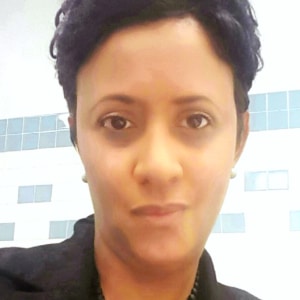Starting a CDF Freedom Schools® program in a youth detention center takes a lot of work, but from the moment Jennifer Romelien saw the program in action, she knew her centers needed it.
Romelien, executive director of detention services for the New York City Administration for Children’s Services (ACS), first experienced the program by observing Harambee—which means “all pull together” in Swahili—at CDF Freedom Schools. Haramabee is an opening activity during which students sing, dance, cheer, and get excited for a day of learning. After seeing Harambee, Romelien knew she needed to bring it back to the youth in her detention centers.
“It’s a little bit of a sell because traditionally, in a detention center, that’s not something you’re accustomed to seeing, kids dancing, singing, or just being able to express themselves,” said Romelien. “But we knew it was something that would be impactful not only to the kids, but to the staff.”
Romelien and her staff set off working to ensure they could create CDF Freedom Schools programs of their own. Given the unique challenges of starting new programs within youth detention centers, they really had to think outside the box to make it happen. Ultimately, careful planning and ensuring senior level management saw the impact of CDF Freedom Schools helped make it a lasting program.
“Everyone is committed, from the commissioner all the way down to my level, in order to bring this program into detention,” said Romelien.
While most CDF Freedom Schools operate out of schools, churches, or other community spaces, Crossroads and Horizon’s CDF Freedom Schools are special in that they operate out of youth detention centers in New York City.
The scholars who reside in the Crossroads and Horizon detention centers are there because their cases are pending in the judicial system. They can live there for a range of time, from a few days all the way to a year depending on with the severity of their charge and judicial input. For some of the young people living in these centers during the summer, the CDF Freedom Schools program serves as a time to simply focus on reading.
“It’s just a program that once you go into the classroom, you can see that the kids really take pride in the space,” said Romelien. “There’s just no other way for me to explain it other than everybody loves it.”
The CDF Freedom Schools program has inspired a passion for reading among the scholars. According to Romelien, they have seen increased library usage after young people participate in the program.
“We definitely see some kids that may not have been reading, [now] they’re asking for books,” said Romelien. “They want extra books to read.”
Romelien aimed to ensure scholars in the program also experienced other positive outcomes outside of reading instruction. Since many scholars in the program are under-credited, they can receive two high school ELA credits for successfully completing CDF Freedom Schools, helping them move closer to graduating from high school.
According to Romelien, the scholars at both of her CDF Freedom Schools sites take extreme pride in participating in the program. Scholars quickly learn the rules, love participating in Harambee, and, most importantly, leave loving the books they read. They can relate to the characters and constantly tell others about their favorite books. As a result, Romelien continues to advocate to ensure scholars in the youth detention centers can be part of the program.
“As long as I am here, there’ll always be a Freedom School,” said Romelien.

